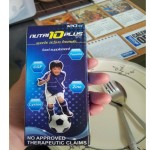When Google Ads indicates that your website is compromised, it typically means that Google has detected some form of malicious activity or security vulnerability on your site. Here are some potential reasons why this might be happening and how you can check and resolve these issues:
Potential Reasons for a “Compromised Website” Warning
- Malware Infections:
- Malicious software, such as viruses, worms, or trojans, may have been injected into your site’s code.
- Phishing:
- Your website may be involved in phishing activities, tricking users into providing sensitive information.
- Hacked Content:
- Hackers might have added spammy or deceptive content to your site, which can lead to a compromised status.
- Unsecured Forms or Data Breaches:
- Forms on your site might not be secured properly, or sensitive user data might be exposed.
- Drive-by Downloads:
- Your site might be hosting scripts that automatically download malicious software to visitors’ devices.
- Unpatched Software or Plugins:
- Outdated software, CMS, themes, or plugins can have vulnerabilities that are exploited by hackers.
How to Check If Your Website Is Compromised
- Google Search Console:
- Log in to your Google Search Console account and check the “Security Issues” section for any reported issues.
- Website Security Scanners:
- Use online tools like Sucuri SiteCheck, VirusTotal, or Google’s Safe Browsing tool to scan your website for malware and security issues.
- Review Your Server Logs:
- Check your server logs for unusual activity or access from unknown IP addresses.
- Examine Your Website Files:
- Look for any unfamiliar files or changes to your code. Pay special attention to common targets like the index files, htaccess files, and CMS core files.
- Check for Blacklistings:
- Use tools like the Google Safe Browsing checker or other blacklist databases to see if your site is listed.
- CMS and Plugin Audits:
- Ensure your CMS, plugins, and themes are up-to-date. Review and remove any unnecessary or outdated plugins.
How to Fix a Compromised Website
- Identify and Remove Malware:
- Use a security plugin or service to identify and remove malware from your site.
- Restore from Backup:
- If you have a clean backup of your site from before the compromise, restore it.
- Update and Patch:
- Ensure all software, CMS, themes, and plugins are updated to the latest versions.
- Enhance Security Measures:
- Implement security best practices such as:
- Using strong, unique passwords.
- Enabling two-factor authentication.
- Setting up a web application firewall (WAF).
- Regularly scanning your site for vulnerabilities.
- Implement security best practices such as:
- Clean and Harden Your Site:
- Remove any unused or vulnerable plugins.
- Secure file permissions and directories.
- Regularly monitor your site for changes or suspicious activities.
- Request a Review from Google:
- After cleaning your site, request a review through Google Search Console to have the warning removed.
By following these steps, you can identify, resolve, and prevent security issues, ensuring your website remains secure and trustworthy for users and compliant with Google Ads policies.











